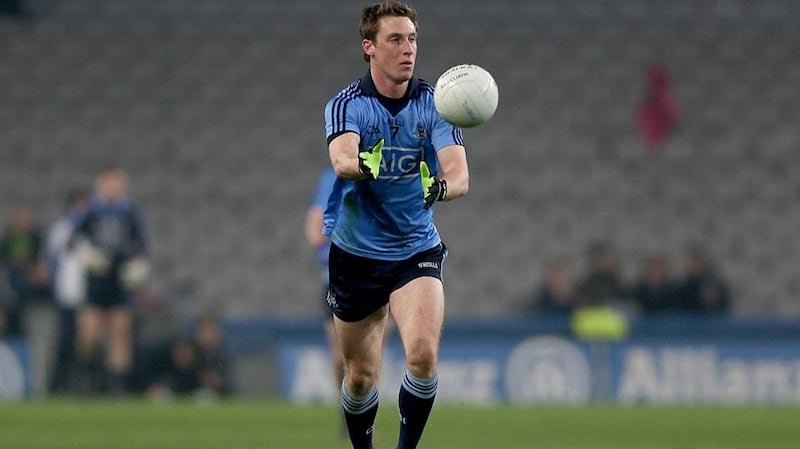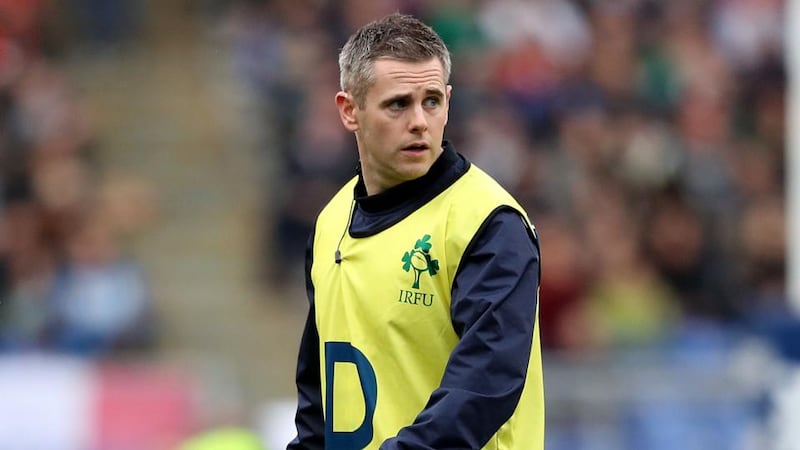Elite sports performance isn’t typically associated with a condition that can more than double a person’s risk of early death.
According to the World Health Organisation, diabetes affects more than 400 million people worldwide, up from 108 million in 1980. When you factor in the globe's shifting age structure, the prevalence of the metabolic disease can be found in some 8.5 per cent of adults – nearly twice the 1980 rate – with an annual economic cost of more than $600 billion (€536.6 billion) and, more importantly, taking upwards of five million lives a year with it.
In Ireland, the number of people living with diabetes is believed to be nearly 230,000, a figure expected to rise to about 280,000 by 2030.
On one level, it’s all rather straightforward. Diabetes is due to one of two things: either the pancreas doesn’t produce enough insulin, or your body’s cells don’t respond properly to the insulin that is produced. But treating and managing the condition is a whole different ball game.
Type 1 diabetes is typically diagnosed in childhood and is an auto-immune condition. Unlike Type 2, it has nothing to do with weight loss or lifestyle (Type 2 makes up about 90 per cent of all diabetes cases and, unlike Type 1, is reversible). Partly inherited, Type 1 accounts for 14,000 to 16,000 of the total diabetes population in Ireland today.
Some diabetic marathon runners can gorge on rich foods for two days following such an endurance event, as delayed hypoglycaemia can otherwise kick-in
Insulin was first used in the treatment of diabetes in 1922; before that, the average life expectancy for someone diagnosed with Type 1 diabetes was 60-90 days. Within decades, however, those with the condition were more than adapting to the demands of top-level sports.
Take Danny McGrain. One of Scotland's greatest ever footballers, the famous right back was diagnosed with Type 1 diabetes in 1974 at the age of 24, but still had another 14 years playing with Celtic. Former Tottenham Hotspur and England footballer Gary Mabbutt is another, as is 26-time capped Ireland soccer star Alan Kernaghan, who retired in 2006.
Then there's the former captain of the Dublin hurling team, Stephen Hiney, as well as Steve Redgrave, the UK's five-time gold medallist and most successful male rower in Olympic history.
So, if these sportspeople can excel at their chosen sport, what’s stopping others with Type 1 diabetes from at least aspiring to do the same?
Kickstart a healthier life
"Diabetes is a condition, not a disease," says Sinead Powell, a long-serving dietician with Diabetes Ireland (diabetes.ie). "So, it's really about knowledge and management for a better quality of life. For a lot of people, it can really be a kickstart into a better, healthier life.
“While I may be generalising, a lot of the time that men are diagnosed, it may be the first time they’ve really taken stock of their lives. In fact, sometimes a diabetes diagnosis has even given them a much healthier, more positive outlook on life.”
Powell says Type 1 diabetes is more difficult to control than Type 2, as everything you do from the moment you get up until you go to bed affects your glucose (ie blood sugar). Continual testing is required, along with a thorough understanding of how your glucose levels rise or fall before, during and after exercise. Furthermore, she says blood glucose levels are lower for 36 hours after exercise.
In addition, she strongly recommends that those wishing to manage their diabetes with a more active, sporty lifestyle first visit runsweet.com and excarbs.com for more detailed advice.
Chris Thompson, an endocrinologist in Beaumont Hospital specialising in Type 1 diabetes, is a former doctor to the Dublin hurling team, and has written a number of scientific articles on diabetes and sport.
There’s different strokes for different folks, Thompson stresses. For the average keep-fitter with Type 1 who might enjoy a weekly game of five-a-side, the challenge is that “his blood sugars will drop down low and have what’s known as a hypo [short for hypoglycaemia]. Then the body reacts by producing adrenaline, and the patient gets shaky and sweaty and has palpitations. It’s very unpleasant, and can lead to disorientation and an inability to carry on with the sport.”
Such keep-fitters might reduce their insulin injections just before the sports event, advises Thompson, but should increase their carbohydrate load in the last meal before exercising. They should also have ready access to a portable, sugary drinks or foods (eg Lucozade or jellies) for when they feel their blood sugars dropping. And if they get wet and/or cold during exercise, it is essential that they eat as soon as possible afterwards.
“Diabetics frequently do run marathons,” he says. “They don’t have as much adrenaline as a competitive match, say, so blood sugars fall.” Thompson advises such diabetic athletes to carry something like a bum-bag containing jellies or wine gums, for instance, which they can eat throughout the event.
He also stresses that the longer the duration and the higher the intensity, the more likely they are to use up their body stores of glucose, which have to be replaced in the hours after exercise. Some diabetic marathon runners can gorge on rich foods for two days following such an endurance event, as delayed hypoglycaemia can otherwise kick-in.
Adrenaline curse
Says Thompson: “When you get elite sportsmen and women with diabetes Type 1, the challenges become slightly different. Of the dozen or so inter-county diabetic players I’ve spoken to, the problem is mostly the same: in the hours before matches, their blood sugars start to rise, which is caused by the adrenaline associated with tension. The bigger the match, the bigger the rise.
“For those elite athletes, it’s more about performance than participation, because when those athletes’ blood sugars rise to 10, 11 or 12, it reduces their performance levels.”
Such athletes, he says, have to think about his or her insulin administration, and about the timing of his or her food and insulin injections, so that rising blood sugar levels occur at the right time for peak performance.
Whereas routine finger-pricking has been the norm for decades, the release in Ireland last October of Abbott’s FreeStyle Libre Flash Glucose Monitoring System has meant that both adults and children over four years old living with Type 1 and Type 2 now have access to pain-free diabetes sensing technology.
Rather than self-monitoring their glucose levels by drawing a drop of blood many times a day from a fingertip, which is then added to a test strip and inserted into a glucose meter, the new system consists of a small, round sensor about the size of two stacked 50-cent coins. Looking a little like a petite nicotine patch, this is worn on the back of the upper arm for up to 14 days, over which a handheld reader is scanned – even through clothing – to give a glucose reading within seconds. It even allows parents to get a glucose reading from their children as they sleep.
I guarantee, if I had this device years ago when I was first diagnosed, it would have made a massive impact on my understanding of my blood sugar levels"
“It’s a very major advance,” says Thompson, “but the patient must purchase it, as the Government hasn’t yet sanctioned it to be free for diabetics. But if it saves you doing many finger prick tests a day, it makes more economic sense to buy and use it.”
While the device gives an immediate readout of blood sugar levels, allowing a pain-free ease of access, it is also significantly more hygienic than finger-pricking in an outdoor, muddy or sweaty environment. It also allows you to look back on the readout after a competitive sporting event, to see when you had peaks or falls in your blood glucose levels. This in turn helps you plan for the next event.
Freestyling All Star
"I guarantee, if I had this device years ago when I was first diagnosed, it would have made a massive impact on my understanding of my blood sugar levels," says Kevin Nolan, a former GAA Dublin county footballer who won an All-Ireland medal with Dublin in 2011. A teacher at Adamstown Community College in Lucan, he is a founding member of the Club Players Association.
“December 2011 was when I was diagnosed with diabetes Type 1 – about three months after our All-Ireland win,” Nolan says. “I had been diagnosed as coeliac the previous September. In 2012, I had a better football year than I did in 2011. I’d been awarded an All-Star in 2011, but actually played better in 2012, even with diabetes.

“The FreeStyle Libre, which I’ve been using for about seven months now, is pain-free, extremely time efficient, and helps me get an idea of where my glucose levels have been and where they’re going to go: there’s little arrows pointing up or down, to indicate that your blood sugars are either rising or falling.
“I think that for any young kid out there who thinks they can’t be sporty because of Type 1 diabetes, they should remember that the condition allows ways for you to participate in the activities you love. It might take a bit longer to prepare, or a bit more help from others, but I think the more help we get from other members of the sporting community, the better it will be for us all at elite level.”
Trial and error of Type 1 exercise
Ciarán Cosgrave, the IRFU national team doctor, works from the Sports Surgery Clinic in Santry, Dublin. He says he is not aware of any diabetic players involved in the Irish rugby senior national squad, but says he'd be surprised if there were not some on the books of the IRFU across the country.
As for the more casual, amateur athlete, he says, “the very fact that they have the Type 1 diagnosis means they are at greater risk of chronic disease, so should be working even harder to minimise that risk. While controlling your blood sugars is probably the best way to do that, the next best thing is regular exercise.
Always make sure you've got some fast-acting sugars ready, such as sugary drinks or dextrose tablets"
“If you’re not taking up exercise, you need to be even more vigilant about how you control your bloody sugar levels. I’d advise those people to measure your blood sugars before you exercise, and exercise an hour or two after you’ve had your insulin, so your sugar levels should be fairly stable.

As it’s very much trial and error, and everyone reacts differently, start off with very low-level exercise for a short duration and see how your sugars respond. Then, as you increase your intensity and duration, you can modify your diet and insulin levels appropriately.
“As the big worry is hypoglycaemia, always make sure you’ve got some fast-acting sugars ready, such as sugary drinks or dextrose tablets. If you do all those things, you can exercise very safely at a recreational, amateur or elite level.”







